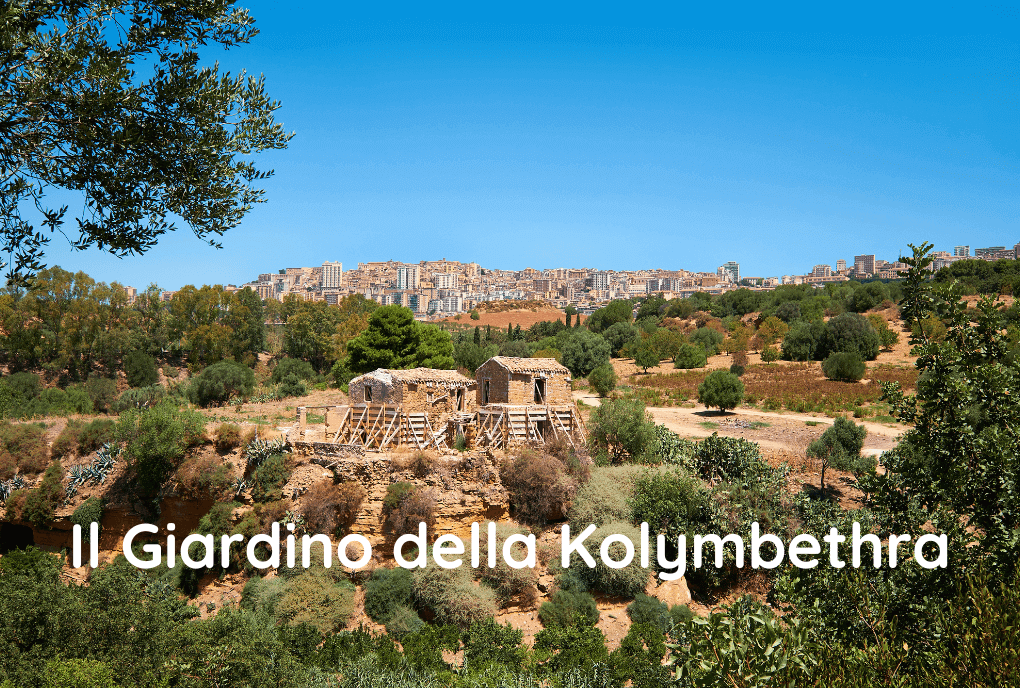
The Garden of Kolymbethra: small jewel of the Valley of the Temples
The Kolymbethra Garden is an archaeological and agricultural park located in a small depression within the well-known Valley of the Temples in Agrigento. Its history has ancient origins, and its beauty is such that it made it one of the must-see destinations of the eighteenth-century Grand Tours. In fact, the Abbot of Saint Non in his writings compares the place of Kolymbethra to Eden and a corner of the Promised Land.
The Garden, therefore, has always been considered a rare naturalistic and scenic gem. But what does it mean Kolymbethra? The term of Greek origin means. pool, referring to the fish nursery inhabited by birds of various species, as described by Diodorus Siculus.
In 1999, after a long period of neglect, the park was entrusted to the Fondo Ambiente Italiano (FAI
). The nonprofit association, has put in place a Natural engineering project aimed at the “resurfacing” of water.
Through a system of saje and cunnuti, small terracotta canals and the recovery of the two Phaeacian aqueducts, the varied vegetation of the Kolymbethra Garden is constantly irrigated. In addition, this project enabled the recovery of thehypogeum, 185 meters long and can be visited with the guidance of experienced cavers.
The archaeological and agricultural site
If you’re wondering what there is to know about the Valley of the Temples, it is definitely worth discovering the Garden of Kolymbethra.
To visit the park is to have a unique sensory experience, walking through about 5 hectares among the most beautiful plants of the Mediterranean maquis. All surrounded by history and monuments. Past the Temple of the Dioscuri Castor and Pollux and the Temple of Vulcan, in fact, it is easy to find oneself immersed in dense vegetation made up of citrus groves, olive trees, almond trees and more among flowers and shrubs.
But to tourists the small valley with its natural beauty has much more to offer. For example, it is possible to enjoy an excellent lunch based on typical products of Western Sicily such as muffuletti cunzati, homemade bread with oil and cheese, cuddiruni cu i zarchi, pizza stuffed with wild vegetables, potatoes and onion, and mbuliata, crusty bread with black olives, sausage, oil and pepper. To ensure this service, in fact, an equipped area is set up among citrus trees and laurel plants so that ancient atmospheres of the island’s rural tradition can be relived.
In order to take home the smells and tastes of the Kolymbethra Garden, you can also buy products made from the park’s fruits, such as the citrus jams and the olive oil.
Thanks to the FAI’s protection and enhancement activities, various events related to the rural world and ancient crafts. In addition, during the summer months it becomes home to events of literary and cultural interest. For lovers of reading under the stars and late-night concerts, surely a visit to the scenic asset can be very impressive indeed.
Historical background
The history of the Kolymbethra Garden has ancient origins. The most reliable source is Diodorus Siculus who in his most famous work talks about the renovations of Kolymbethra. After the Battle of Himera in 480 B.C., the tyrant Theron initiated work to restore the valley by commissioning theFeace Aqueduct to convey water and feed the pool.
Also the work of the deposta are the temples of the city of Akragas, present-day Agrigento, and hypogea for water collection. A resort of tyrants and Akragantine inhabitants, after a century since the notorious conflict against Carthage, the pool is buried and used as a vegetable garden. There has been no news since then.
To get information again about the fate of the Kolymbethra Garden, one has to wait until the Middle Ages and the Modern Age. In the 1100s, the area is used to reedbed while in the 16th century it is a
hortie abaziae as a kitchen garden adapted as a citrus grove of the Lower Abbey convent.
In the last decades of the twentieth century it is abandoned by local farmers after centuries of intensive cultivation. One must wait for the 1999 when the Region of Sicily entrusted the property to FAI for twenty-five years in order to restore the garden and maintain it.
In 2007 and 2009, the Kolymbethra Garden is named the most beautiful park in Italy, along with 10 other cultural properties.
The garden
The acres over which the Kolymbethra Garden stretches are divided into five zones Based on land use. These are:
- area of thecitrus grove: here there are trees of oranges, tangerines, lemons and other citrus fruits, and the characteristic feature is that they bloom several times during the course of the year; there are also mulberry, plum and loquat trees;
- area of almond-uliveto: almond and olive trees make up most of the plant component as they are highly adaptable to the drought-prone climate of the Valley of the Temples. This area is located on the steep walls of the Kolymbethra and covers 18 percent of the land;
- area of the maquis: vegetation in this area is spontaneous and consists of plants and shrubs that can survive long periods of drought. These include predominantly carob trees e laurel but you can also find the dwarf palm which is an exception;
- area with riparian vegetation: this runs along the waterways in the garden and consists of hydrophilic plants such as reed and castor bean;
- area with rocky vegetation: consists of plants that grow on rock walls. In particular, those at Kolymbethra are made of calcarenite, a porous stone on which plants such as the caper, the dwarf palm and the common broom.
Usage and opening hours
If you are wondering whether it is necessary to book in advance to visit the Kolymbethra Garden, we assure you that it is unnecessary. In fact, we recommend doing more than a visit to the naturalistic asset as each season gives different emotions based on the cycle of the sun and vegetation.
So what are the opening hours of the Kolymbethra Garden?
The park can be visited every day, except in January, 10 a.m. to 5 p.m. Closing is postponed to 7 p.m. during summer months and brought forward to 2 p.m. during winter months.
The cost of the ticket is 5 euros and there is the possibility of purchasing a cumulative one at a cost of 13.50 euros, which also includes the tour in the Valley of the Temples.
by Anna Logrieco





